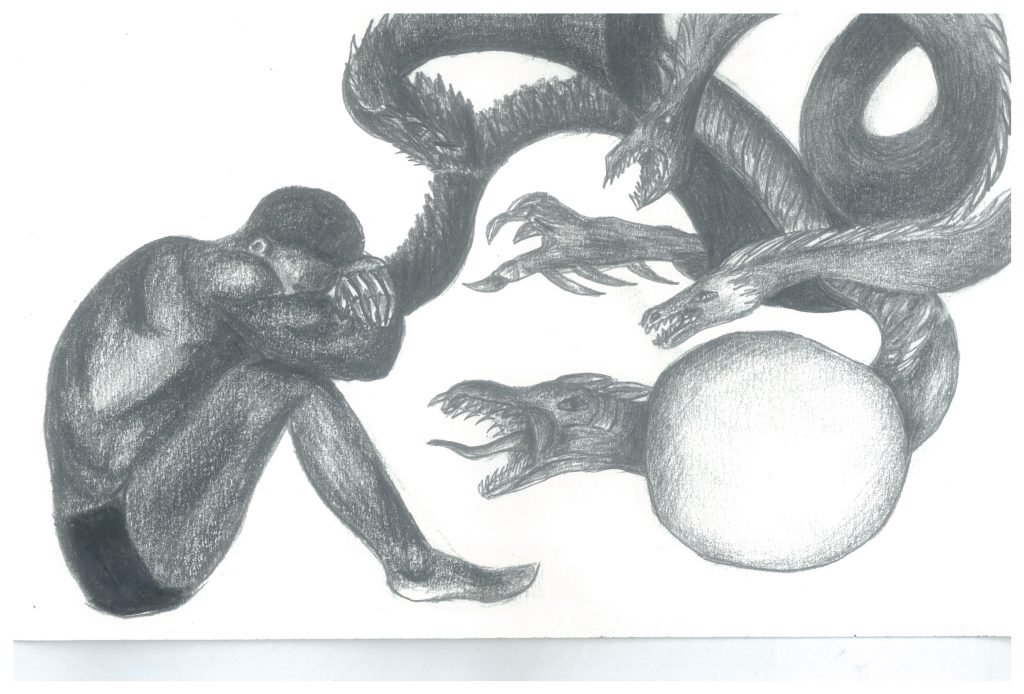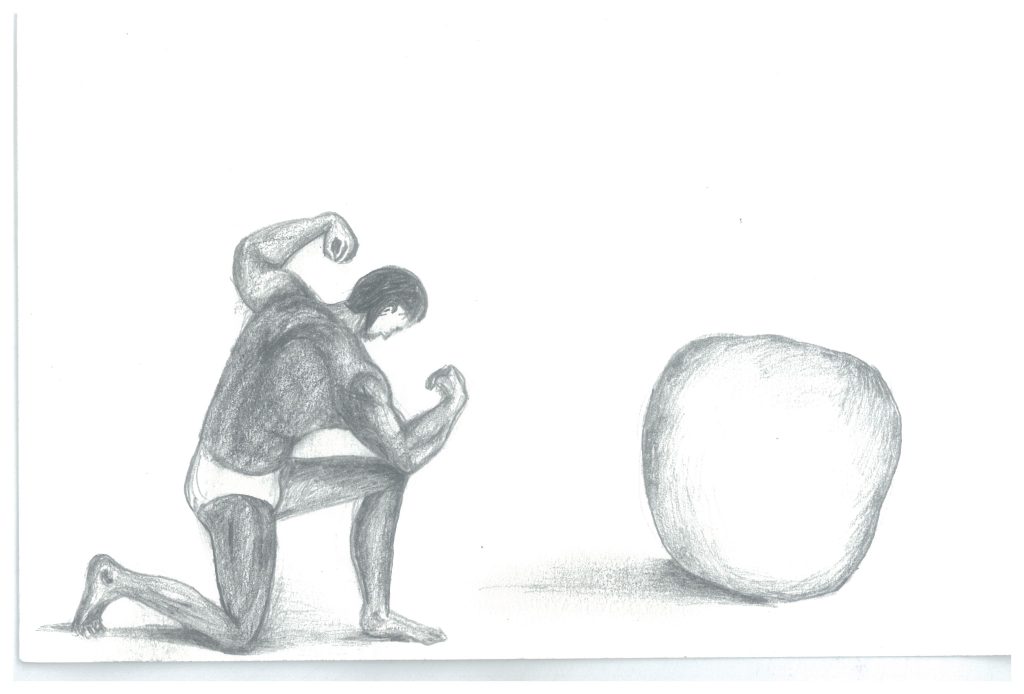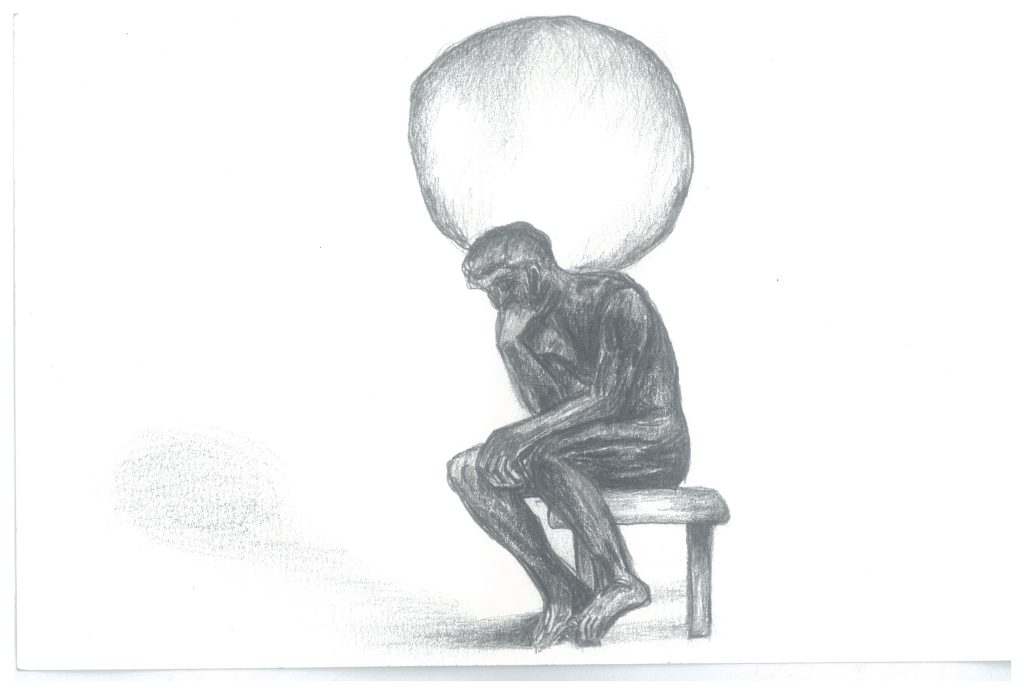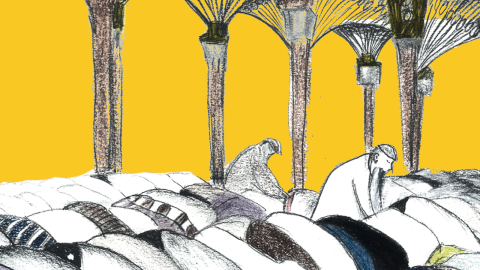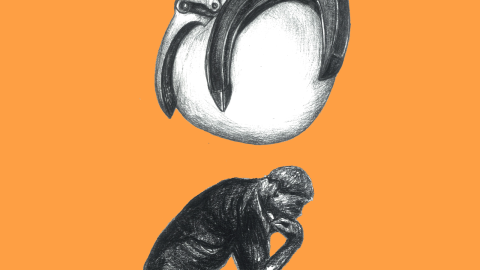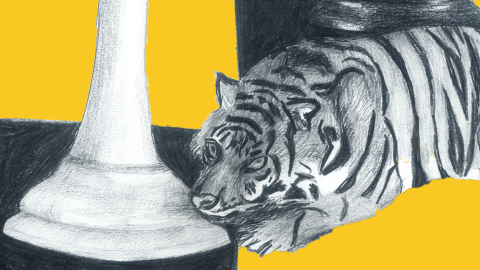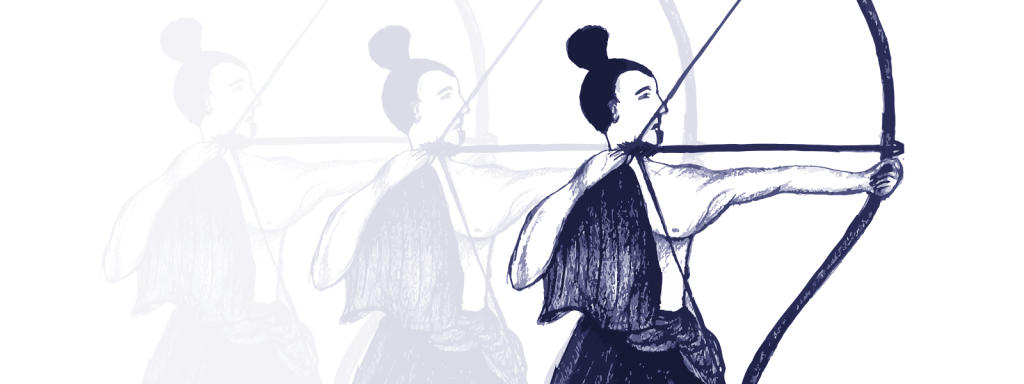
- The Hunter-Sheep Model: What Defines our Life Direction
- How our Perception of Failure and Success Guides our Actions
- How We Can Change the Current Direction of Our Life
- Career Influence on Mindset and Direction
All or nothing you can give,Live your life, love to live.
’Cause You Are Young by C. C. Catch
Ever wonder why life is somehow always a series of good times and bad times? And how come, during a good phase, 30 consecutive minor life events are great and in a bad one, 20 consecutive minor life events just suck? What are the odds of that!
There is an explanation: Life has a direction.
The direction of life is not set in stone. Like we said: good times, bad times.
At the core of I Grow Younger is the belief that personal growth (positive change) is surprisingly easy. Remember, we change all the time, just not always for the better. For example, there is rarely much internal resistance to developing bad habits or addictions to substances, activities, or people.
Resistance to change (inertia) is an evolutionary relic that helped our billions of predecessors survive against all odds so we can all exist today. We evolved in a world in which frequent experimenting meant a very likely death or at least getting into enough trouble that you won’t be passing your genes on.
However, evolution also gave us the ability to prediction. Using this, we can predict when our chances of change are higher and not waste a moment.
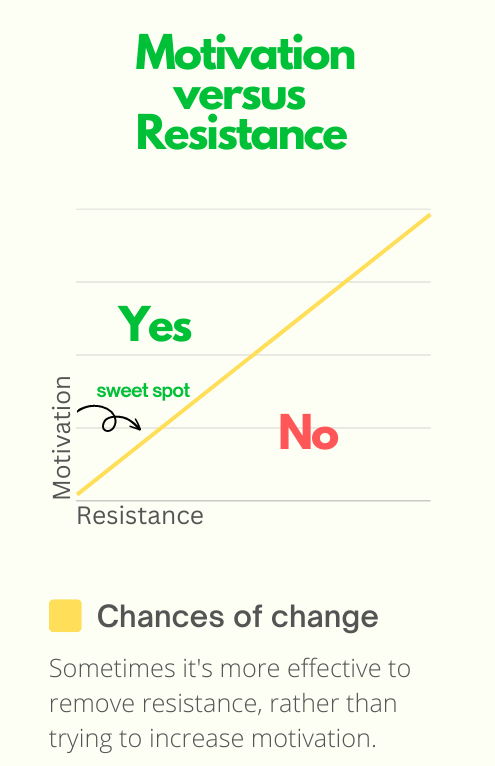 A friend of mine was considering buying a stationary bike for his home. However, he thought his motivation to use it would most likely decline over time. That’s an easy prediction to make, right? Instead, he decided to go with a less conventional fitness machine – a virtual reality headset, packed with a highly physical VR game. Rather than hoping for an unlikely spike in daily motivation, he counted on the brain’s biggest weakness instead – that it’s very easily bored. He planned for lower resistance, and it worked.
A friend of mine was considering buying a stationary bike for his home. However, he thought his motivation to use it would most likely decline over time. That’s an easy prediction to make, right? Instead, he decided to go with a less conventional fitness machine – a virtual reality headset, packed with a highly physical VR game. Rather than hoping for an unlikely spike in daily motivation, he counted on the brain’s biggest weakness instead – that it’s very easily bored. He planned for lower resistance, and it worked.
It’s actions that bring about change. Our chances of change are the relation between our motivation and our resistance towards a certain action. We often talk about finding motivation when, in fact, working around our resistance is what usually gives quicker results. Make plans that target your resistance, instead of ones that don’t even factor it in. Resistance is always part of us!
Actions Create Life Direction
The Hunter-Sheep model defines two ways you can feel, think, and act in modes that set current life direction.
When we act like a hunter, we’re being driven by love, its physical manifestation (energy), and its intellectual manifestations (curiosity and creativity). When we act like a sheep, we’re being driven, or rather, held back by a mix of paralysing fears and inertia.
The Hunter-Sheep model is fit especially for smaller, everyday decisions. The more trivial the problem, the less important it is in general. But although the outcome of a certain action might be somewhat insignificant, its Hunter-Sheep characteristics are always essential for the direction of your life. This isn’t related to the Fight or Flight response to life-or-death situations, or anything critical to your health and safety.
Important: No matter what we’re driven by, we’re only looking at our actions.
We may fear to do the right thing and still do it. We’re human and our feelings are rarely perfect, yet we can still make healthy choices in most cases. No one truly feels and thinks either in hunter or sheep mode all of the time.
While we don’t control our thoughts and feelings directly, our actions now generate our thoughts and feelings in the future.1 Essentially, a human is gifted with the power of prediction. Can we divide our actions into just two categories: desirable and undesirable, for closely following thoughts and feelings? Yes, with some deeper understanding, we could – and then we can try to steer our choices to desirable ones.
This concept is not new by any means. The popular book The Winner Effect explores it, but on a larger scale and timeline. Here we’re more focused on how to have a winner day, a winner hour. A winner minute. Even a winner few seconds. Because even the most flashy winner year (Think Einstein’s miracle 1905) is simply made of 365 not-so-flashy winner days. And after each one, the chances for the next one are better. True wins are not in visible achievements but in giving your best. The rest is external forces and luck.
The Hunter-Sheep Model in Facing Everyday Obstacles
When people in Hunter mode encounter a small to medium-sized problem, they choose one of two actions.
- Pick Quick and Be Slick: They have a quick, small-scale, and active solution, based on love and creativity.
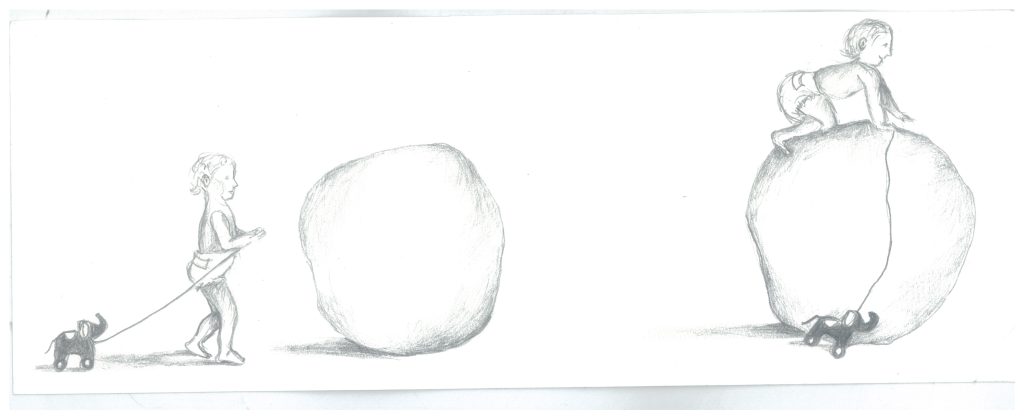
- Move on and Groove on: They dismiss the problem as not worth solving and forget about it, moving on.
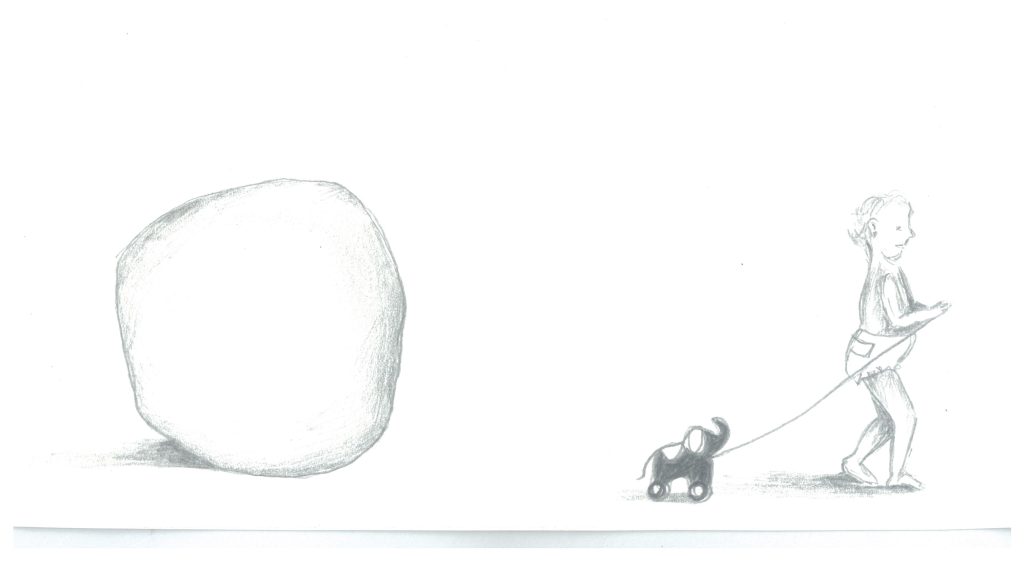
Sheep reactions tend to complicate things. At I Grow Younger, we believe the majority of people spend most of their time in Sheep mode, choosing one of the following reactions to obstacles:
- Passivity
They want to act but have no clear solution and feel helpless, lowering their self-esteem below healthy levels. - The Overkill
Often, internal fears blow the problem out of proportion, and they come up with a big, extremely safe, slow solution (which might end up being a waste of time and resources). - Passive Aggression
They have a passive-aggressive solution, based on fear, that often does real-world damage to others (raw fear). - Mental self-harm
They ignore the problem, but can’t forget about it, and go through a downward spiral of thoughts.
Simply put, in a large portion of time spent, Hunters do it; Then they do the next; And then the next. Sheep think about it; Then they think more about it; And then some more.
Of course, we’ve only been looking from an emotional standpoint. Real actions have real consequences. In the Sheep mode of thinking, there may be reason enough to avoid most actions. But Hunters know better than that. They know in failure, there is always something new to learn, unlike Sheep who tend to end up stuck in everything they do.
Confusing Achievement for Success, and Failure for Personal Defeat
Even before failure is confirmed, the Hunter has already moved on. They get extra motivation and become even more of a Hunter. They also don’t overanalyze and instead, get a better perspective after time has passed and more experience has been accumulated. They remember: You can’t win all the time in life. Random factors affect everything.
This is contrary to Sheep, who take failure as personal defeat. They point all the blame either inwards or on someone else. They forget that because of the randomness and complexity of life, for most failures, there is no one in particular to blame. Self-esteem drops, and extensive useless analysis is done, wasting time and energy when no good reasoning can happen in a biased mess of facts and emotions.
As for success, the Hunter takes it naturally. They don’t brag or celebrate, just move on to the next piece of the big picture. Most importantly, they make sure every success has Added value.
Sheep strategies rarely truly succeed to begin with. People in this mode of action often mistake achievements for success.
Success actually has 3 components.
 When a Sheep ‘‘succeeds’’, they often look at the Achievement and not at the Added value, which is usually the key to future success. The main motive for this perspective is that the Achievement is what other people can see – say, something you can put in your resume.
When a Sheep ‘‘succeeds’’, they often look at the Achievement and not at the Added value, which is usually the key to future success. The main motive for this perspective is that the Achievement is what other people can see – say, something you can put in your resume.
When we sent people to the Moon for the first time (Achievement), we spent about 100 billion dollars in today’s money (Effort) to send 2 people to a place that is so unfriendly, they had to come back immediately in order not to die.
The most expensive trip in history was worth it, though, because it inspired a generation, and you cannot put a price tag on that. That is Added value.
Another example of an unbalanced formula for success is modern education, mainly universities. Most people invest a huge amount of Effort (3-5 years of their life, large sums of money) for the Achievement of getting a degree. Unfortunately, in today’s universities, the Added value of knowledge usually isn’t proportional to the Effort.
Apart from medicine, law, and science, most careers can be learned and practiced outside of university in less than half the time. Take IT: Hunters would master a technical niche in 1-2 years, while building a project that could even potentially earn money. They would have the joy of inventing, instead of copying. Sure, no degree, but Hunters don’t need degrees. If any such job requires a degree to get in, it’s a place run by Sheep for Sheep and not a good place for Hunters in the long run.
Without Added value, Achievement is not true Success.
The Golden Rule: How to Change Life Direction
Every action you take creates and influences the next. A Hunter move leads to more Hunter moves, and Sheep moves lead to more Sheep moves. 🐑
What you’re driven by is what you’re going towards. If it’s love, curiosity, creativity, and playfulness that drive your actions, they will create more sources of love, joy, etc. If you let fear “motivate” your actions, your life will take the direction of inertia, passivity, and stagnation (stuckness).
Each of us has a Hunter and a Sheep inside us. Each move we make is typically either made by one or the other, with very few falling in the middle. But it’s not the moves themselves that matter as much, it’s the mood you’re building, the direction of your life.
In a sequence of actions, there are usually both Hunter and Sheep moves present. Habits and external stimuli can result in us making a Hunter move, while in Sheep mode, and vice versa. However, the mood you’re in defines 90% of your everyday actions (and inactions). That’s why it’s exactly this set of motives and actions that has such a powerful influence on your day-to-day experience and your life direction.
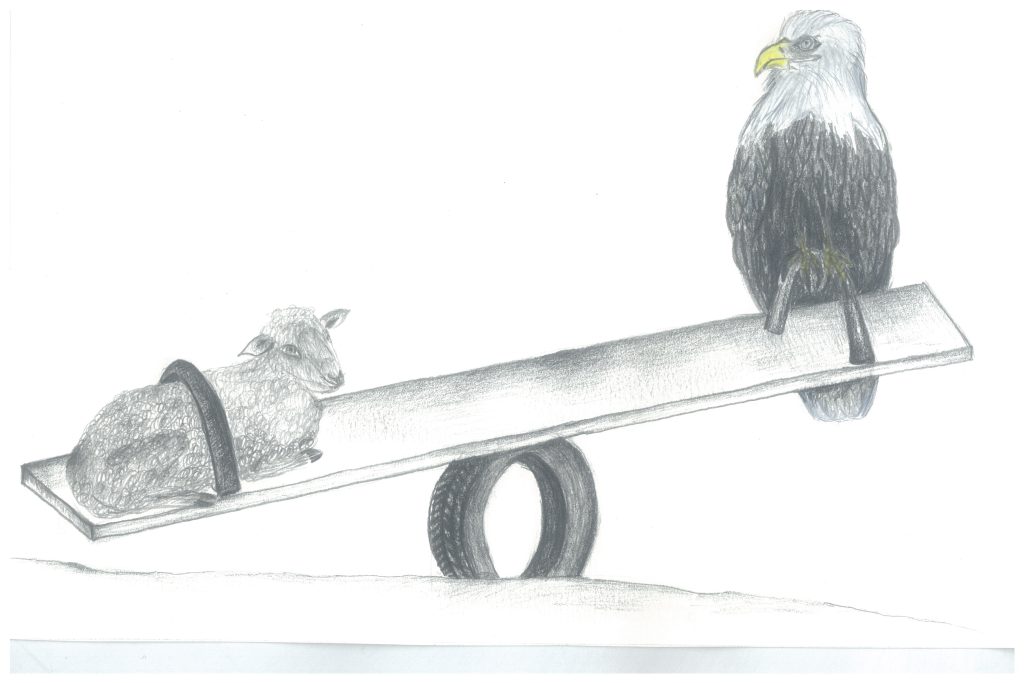
From Fear to Love: Change Your Life Direction
Being a Hunter against the evolutionary powers of social fear and inertia is an eternal effort. But on the bright side – how many other life-altering problems can you solve 24/7, never having to wait?
- Focus on your actions more than anything else.
How anything external initially makes you feel is not the main part of the battle. But how you react is in Hunter or Sheep territory.
- Understand what drives each action you take.
The simplest way is this: ask yourself if it’s based on love or fear in their respective manifestations. - Don’t dwell on the past.
Proximity on the timeline matters! Even if you’ve chosen to act in Sheep mode 100 times in a row in your life, 10 recent Hunter moves are enough to get you back in the game, at least emotionally.
Guess what? If you want to be a Hunter in 10 years, being a Hunter at this moment is all you have to do to increase your chances. As per the Golden Rule, one Hunter move generates the next Hunter move and so on – a powerful life direction of joy and courage. No planning is needed; it’s that simple.
The stakes are high. Getting stuck in a long line of Sheep moves leads to chronic anxiety, depression, low self-worth, and fearfulness.
Being a Hunter is also very closely related to happiness. The happier you are, the easier it is to get into Hunter mode and keep being happy. At the same time, if you’re unhappy, a transition to Hunter mode is one of the best ways out.
Important: Some careers require you to think and act in Sheep mode while on the job because of the high cost of errors. This carries the danger of the Sheep way of thinking and acting invading every aspect of your life and your decisions.
Examples include accounting, law, medicine, structural engineering, desk jobs in the military, and law enforcement. People in such occupations might benefit more than others from out-of-work activities where they don’t have complete control and Hunter moves are rewarded, rather than punished. It also shows that being a Hunter is not about the quality of choices. It’s all about being fast, adaptive, and autonomous vs. the Sheep way of being slow and following protocols.
And scales and timescales matter. There is no Hunter way of doing a 10-hour heart surgery or launching a space rocket because these are long, monumental tasks that have a thousand ways to fail. But on the personal level, there is also no Sheep way of confronting our fears and improving our daily life by overcoming inertia.
The smaller, more insignificant a life choice is, the more the choice itself doesn’t matters, only the Hunter or Sheep feeling that it leaves behind has any significance for the future. And on the timescale of millions of seconds that fill up a month, the millions of small choices for improvements and changes, the tries and smiles become the backbone of our entire lives.
That moment when you see the bus just before you arrive at the bus stop. If you run after the bus and catch it, it won’t make a difference in your life direction because you caught the bus. It will make a difference because it sends a signal to your mind and body that you accept challenges and succeed. It will because of the way it makes you feel. And I kid you not, your day after running for the bus will very likely be significantly better than if you had waited for the next one.
In fact, this is not what we are doing. There is an important context for the Hunter-Sheep battle:
- It only happens in the current moment and is defined by actions – your bridge between The Game of Self and The Game of Life.
- It’s only about how what you do makes you feel. So we only look at the Game of Self result and only the self-induced feelings.
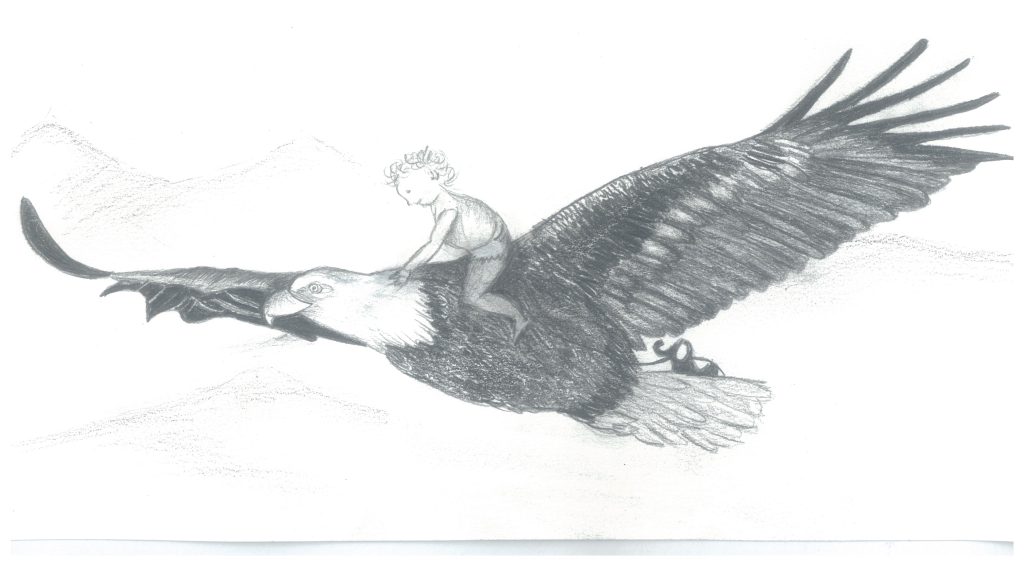 If someone sends love or hate your way, this is not a Hunter or Sheep thing. It’s an external event that makes you feel a certain way.
If someone sends love or hate your way, this is not a Hunter or Sheep thing. It’s an external event that makes you feel a certain way.
This concept is powerful not because it’s immediately life-encompassing. It’s powerful because the effects of it touch everything in your life long after. Any Hunter or Sheep act in the present affects the growth of both your Game of Self and Game of Life.
It’s experience, learning, and joy VS. the acceptance of fears and barriers. These are opposite directions with totally different responses in your body and brain, both biological and psychological.
The key thing about the Hunter-Sheep model is not just that it’s powerful and important, but that it’s doable. Our actions are much more in our control than our birth circumstances, feelings, or thoughts.
Not being born in a war-torn part of the world is important to your happiness, but can you change it if you were? You cannot change your family, upbringing, and all the love or hate the world will unleash on you. But no matter what, you have choices and can try to be a Hunter. It’s the best you can do to help yourself.
And if your goal is to do good work and have enough money and freedom… this can be achieved with Hunter moves because our economy is built to reward them. Fast-paced trial-and-error and step-by-step improvements are at the core of starting and running a business.
In I.GY, we’ll help you differentiate Hunter and Sheep moves whenever we can, if this paradigm is new to you. Do you know anyone you think might benefit from a bit of Hunter mode? The effects of our everyday actions on life direction are not a new concept, but it’s one we easily forget. Please share this post with those you believe need a reminder!
- Goldin-Meadow, S., Beilock, S. Action’s influence on thought: The case of gesture.// Perspectives on Psychological Science, Dec 2010.
https://www.researchgate.net/publication/51127040
Life Direction and How to Choose Your Next Move
Every life has its direction
given by your current action.
Don’t waste your energy and time –
too much thinking sets you in slime!
Say ‘bye’ to sheep mode and fear –
great thoughts and feelings are here!
Failure can happen – never mind!
Good luck and new chances you’ll find!
Love makes you to be a hunter –
give your best and see the wonder!
Just plan to keep resistance low,
so motivation let’s you grow!
Every current hunter action
is your perfect future traction.
Be smart, fast, adaptive and free
and you have the happiness key!
Create added value and win –
a new life for you will begin!


